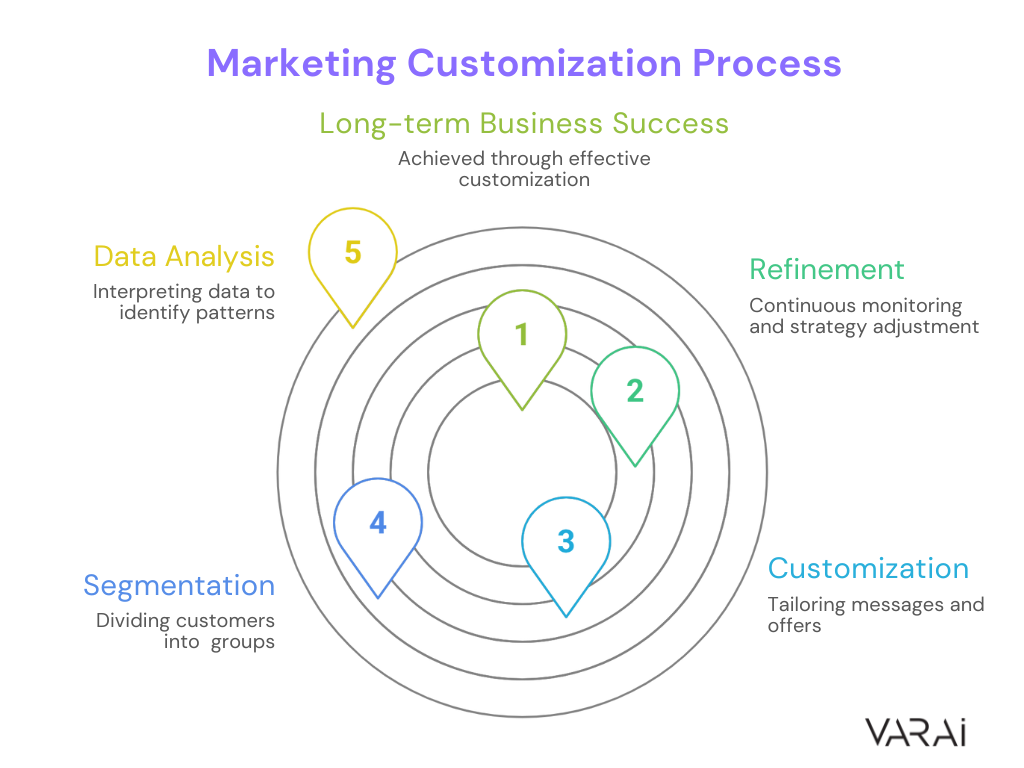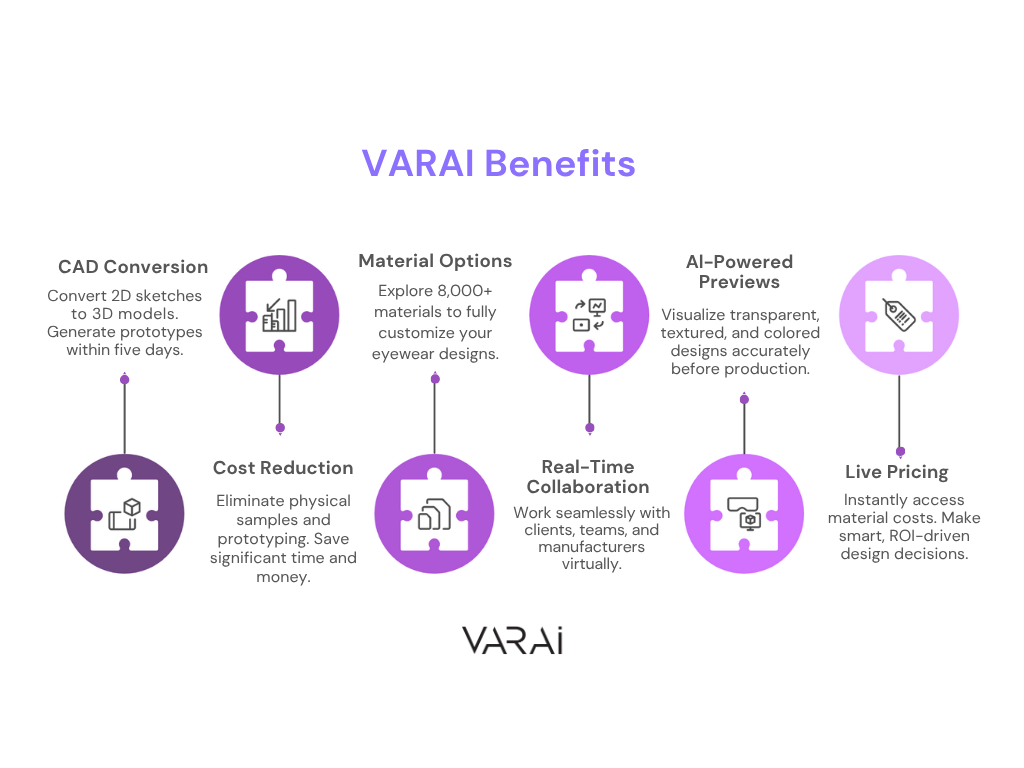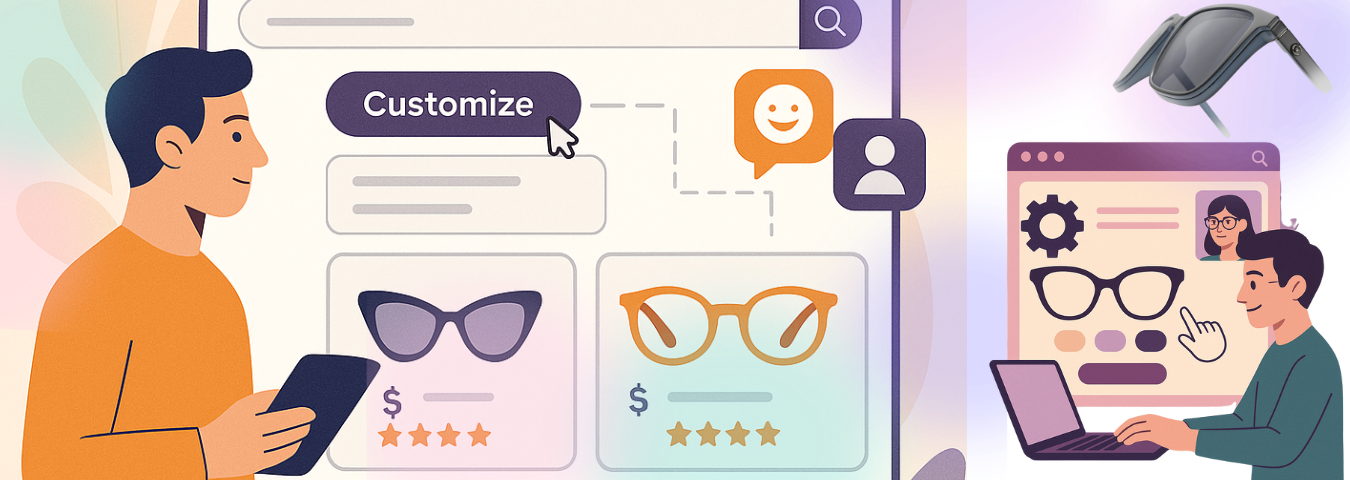“If Amazon knows what you’ll buy next… why not your store?”
That’s the presence of customization in marketing. It’s the reason we visit certain e-commerce sites and end up spending more than we planned. It’s not always about offering the best product, but about offering the one that feels most familiar and relevant to each individual shopper.
Today, customers expect options. From colors and sizes to chosen recommendations, they want the ability to shape their shopping experience. But the key isn’t changing everything about your product. Most prefer to have just enough control to make the experience feel more unique and personal.
So, can you apply these customization strategies across your entire e-commerce presence? Absolutely, and in this article, we’ll explore exactly how.
What is Customization? The Role of It In Marketing
Customization is the process to edit, adjust, or tailor a product or service to an individual’s needs. That’s the official definition of customization, but in-depth, it is so much more different. In reality, a lot of brands and e-commerce websites use hidden hints of customization and personalization to lure customers.
Even a small recommendation can be considered as customization in marketing. However, e-commerce sites go above and beyond to provide custom features like changing colors, adding new aspects, or even receiving content informing them about the product.
So can we say that customization is a sneaky tactic?
Yes.
But can we also say that it is effective in building brand loyalty?
Also yes!
In marketing, customization brings a whole new meaning. Receiving emails about similar products, getting a “thank you for the purchase Sophia” messages, getting recommendations, offers, and constant notifications are all part of customization options for an e-commerce business. If in 2025 your brand lacks customization, studies have shown that 66% of consumers will abandon your brand.
How Does Marketing Customization Work?
Before you understand how marketing customization works, you need to know the difference between customization and personalization.
Customization is when a customer gains control over products. A good example will be customers building their own meal boxes or subscription packages.
While, personalization is when a brand or e-commerce site adjusts its products and content around the customer. For example, you get personalized emails with your name and interests.

Now that you know the difference, it will be easy for you to understand how marketing customization works. It follows a process that is end-to-end secure for marketing to a targeted audience.
- The first step is to gather customer data from touchpoints, including browsing behavior, purchase history, and demographic information.
- Then comes analysis of this data using machine learning algorithms to interpret it and identify patterns and preferences.
- Afterward, most brands divide their customer base into distinct segments based on shared characteristics or behaviors.
- Now starts the customization part. Crafting and delivering tailored messages, product recommendations, and offers to each customer segment or individual.
- Lastly, e-commerce platforms continuously monitor customer responses and refine customization marketing strategies to enhance effectiveness.
This start-to-finish customized, unique approach is the key that can unlock more sales, conversions, and opportunities for long-term business success for e-commerce websites. Although, strategies, like hyper-personalized CTAs can increase your conversions by up to 202%.
Some Examples of Customization in Marketing
The best way to understand customized products and their impact is by looking at real-life examples of customization in marketing.
Coca-Cola’s “Share A Coke” Campaign
One of the most memorable customization campaigns in marketing history, Coca-Cola replaced its signature brand icon with names of people. It encouraged sales and motivated customers to share a Coke with someone whose name was on the bottle. In 2025, this campaign is back!
The results?
- Reversed a decade-long decline in U.S. sales, achieving a more than 2% increase.
- Generated over 12 million media impressions and a 7% increase in consumption among young adults.
- Expanded from 250 names to over 1,000, and introduced customizable mini-cans at events.
Nike’s Product Customization Program “Nike By You” (formerly NikeiD)
Nike created a program for its customers to personalize their footwear by selecting colors, materials, and custom text or graphics. Named “Nike By You”, this campaign helped many create unique designs, some of which are available on their website.
After this initiative, Nike received:
- Enhanced customer engagement and satisfaction by offering a unique product experience.
- Contributed to increased direct-to-consumer sales and brand loyalty.
Starbucks Personalized Rewards Program for Marketing
Starbucks gathers hundreds of thousands of customer data, which it utilized by offering a rewards program. The more people shopped, the more personalized rewards and promotions they received through this brand loyalty program.
Starbucks achieved a lot, including:
- Members of the Starbucks Rewards program spend 3x more than non-members.
- The program boasts 16.8 million active members in the U.S., each receiving tailored offers based on their purchase history.
Adidas’s Personalized E-Commerce Experience
Adidas implemented personalization strategies to enhance user engagement and conversion rates on their website.
These changes to their e-commerce website brought forth:
- A 259% increase in average order value and a 35.5% boost in conversion rates for returning users through targeted coupon codes.
- Improved mobile conversion rates by 50.3% by personalizing the mobile menu based on browsing history.
- Saw a 13% increase in homepage conversion rates using AI-powered product recommendations.
IBM’s AI-Generated Personalized Marketing
IBM tested Adobe’s famous AI image generator, Firefly, to create highly customized visuals. These assets were used for their marketing campaigns to attract more customers.
Not only did they achieve that but also:
- Generated 200 images with over 1,000 personalized variations tailored to different audience segments.
- Achieved a 26x increase in engagement compared to IBM’s previous campaign benchmarks.
- Demonstrated how AI-powered customization can dramatically enhance campaign performance.
Are All Customization Strategies The Same? Definitely Not!
No way all customization strategies can ever be the same. Not only are there different types of customization options but also e-commerce platforms integrate these strategies differently.
Firstly, strategies can be categorized in different ways, such as manual product customization, dynamic content delivery, and interface preferences. Content and interface customizations produce the highest results, among these.
Furthermore, AI-customizations are infiltrating the market. You can track real-time as an e-commerce business using machine learning and provide targeted recommendations or content delivery. Customizations are advantageous to the e-commerce sector, with the space to grow efforts to become more and more targeted as time moves.
Customization can be offered for multiple industries, all adopting different strategies. Some popular sectors are:
- Eyewear – Manufacturers can design frames for the trendiest fit and style.
- Fashion – Shoppers personalize clothing styles and sizes.
- Footwear – Users customize colors, soles, texts, materials, and logos.
- Furniture – Buyers adjust size, fabric, and design to match their interiors.
- Beauty – Tailored skincare, haircare, and makeup recommendations to individual needs.
- Jewelry – Clients create one-of-a-kind custom pieces with their choice of metal.
- Tech Gadgets – Consumers choose components and build types.
- Food & Beverage – Meals tailored to dietary preferences online.
- Travel – Personalized packages built around traveler interests.
- Print-on-Demand – Customers upload designs for unique products.
Benefits of Customization in E-Commerce
With so many real life examples and data, it is evident that there are benefits of customization in e-commerce. Here are some that you can get by applying customization in marketing strategies:
1. Boost Customer Engagement with Customization
By giving away the control to your customers for your products, you can guarantee better brand loyalty. It’s not just a fluke, statistics show that 80% of consumers are more likely to purchase from brands offering personalized experiences.
It emotionally lures them to grab their interests, preferences and needs to design a product only they can have. This idea of 1 in a million is what pushes most customers to buy selective products and brands that offer full customization techniques.
2. Help Shoppers Decide Faster with Custom Options
One product available in 100 colors does not solve the problem of cart abandonment or decision anxiety. Customers get overwhelmed with options, so the quickest way to eliminate such problems is to offer customization. It will lead to the action of final purchase rather than uncertainty.
In less time, custom options are very helpful in creating a match of expectations vs. what customers receive as a product. It will also lead to better reviews as the final result is exactly what the customer needed and anticipated on getting.
3. Increase Average Order Value Through Customization (AOV)
According to data, personalization typically lifts revenue by 10% to 15% (and up to 25% for top performers). This is proof enough that customers are ready to pay more for customized products. Hence, the more custom-forward products your e-commerce site has the better.
The base price of the same product can be between 20% to 30% cheaper, but the high cost associated with e-commerce product customization is justified. People perceive the value as high because of the unmatched personalization (feeling they made the product) they receive.
4. Build Brand Loyalty with Personalized Products
A brand is always recognized for two things, its product or marketing. You can buy marketing efforts but you can’t make customers fall in love with your product. To make sure you don’t lose brand loyalty, customize your products in mass or offer individual branding.
This technique is used by many brands now, offering personalization that helps all products stand apart. These products can be seen as signature items and become identified with the brand’s name.
5. Lower Return Rates Using Customization Tools
Returns are the biggest problems that e-commerce websites face. Lowering these rates can be done only through customization. Purchases can become more personal and returns can become less to no at all depending on how much customization is offered to the customer.
Keeping the customer involved in the product buying journey can help your brand sustain them for the future. This can also help turn these customers into returning ones due to the high engagement it creates.
6. Collect First-Party Data Through Custom Experiences
Customization in marketing is rich in first-party data. Each individual keeps logging in their favorite colors, styles, or text preferences. Without forcing the user to systematically fill data through forms and surveys, systems naturally capture what’s in demand or not. These data points can be seen as creativity though sneakily its user data.
Challenges of E-commerce Product Customization
Your 3D product customization experience can be good or bad. We have already explained the good above and now let us tell you the things that can go wrong.
- Difficult to Scale Without Automation: Manual handling of custom requests is time-consuming. Without automation, it’s hard to grow while maintaining accuracy and speed.
- Data Privacy and Compliance Risks: Customization often involves tracking user preferences or inputs. Usually systems don’t have in-built mechanisms for tracking and also lack compliance with data protection laws like GDPR or CCPA.
However, tools like VARAi’s 3D configurator can help you offer automotive customizations and personalized user experience to your e-commerce customers.
Worth Reading: Product Configurator Benefits for E-commerce
Offer 1:1 Customization with VARAi and Increase Revenue By 40%!

Experience the future of product customization with VARAi. We are the world’s first 3D eyewear configurator designed for seamless, scalable, and stunning e-commerce product customization.
You can:
- Convert CAD to 3D in Days: Transform 2D sketches into lifelike 3D eyewear models and generate prototypes within just 5 days.
- Cut Costs by 70%: Eliminate the need for physical samples and expensive prototyping, saving significant time and money.
- 8,000+ Material Options: Explore an expansive library of acetates, metals, lenses, and textures to fully customize your designs.
- Real-Time Collaboration: Work seamlessly with clients, teams, and manufacturers in a shared virtual workspace.
- AI-Powered Previews: Visualize transparent, textured, and colored designs accurately before production.
- Live Supplier Pricing: Instantly access material costs to make smart, ROI-driven design decisions.
Perfect for brands, manufacturers, and e-commerce platforms, VARAi revolutionizes the eyewear design process with speed, accuracy, and style.
Ready to Build a Collection That Reflects Your Vision?
VARAi is changing what’s possible in e-commerce platforms and eyewear design. With customization and personalization embedded into every feature, your brand can move from concept to market faster, cheaper, and smarter.
→Begin Design Creation
→Unlock Access to Our 3D Library
→Request a Custom Demo or Pricing
Let your creativity lead. We’ll handle the technology. Connect with us today.

